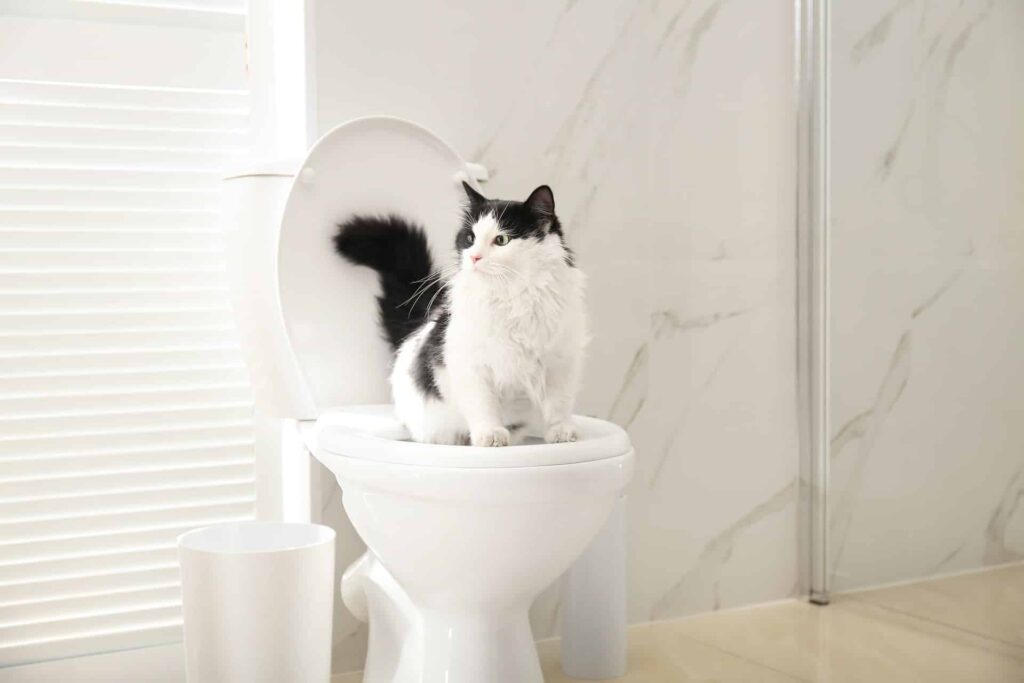Why You Should Never Flush Cat Poop Down Your Toilet
When it comes to disposing of cat waste, many pet owners might think that flushing it down the toilet is a convenient and hygienic option. However, this common practice can actually cause a lot of harm to both the environment and your home’s plumbing system.

Harmful to the Environment
Cat poop may seem harmless enough, but when flushed down toilets, it can have serious consequences for the environment. Cat feces often contain a parasite called Toxoplasma Gondii, which is harmful to marine life. This parasite can survive the sewage treatment process and end up in rivers, lakes, and oceans, where it can infect fish and other marine animals. These infected animals are then consumed by humans, leading to potential health risks.
Furthermore, flushing cat poop also wastes a significant amount of water. Each time you flush your toilet, around 1.6 gallons of clean drinking water is used. By simply throwing away cat poop in the trash, you can help conserve water and protect the environment.
Plumbing Nightmares
Apart from being harmful to the environment, flushing cat poop down your toilet can also cause serious plumbing problems in your home. Cat litter is not designed to break down in water like toilet paper does, and it can easily clog pipes and sewer lines. This can result in costly repairs and inconvenience for you and your family.
Additionally, the chemicals and fragrances often found in cat litter can also damage your plumbing system over time. These substances may corrode pipes or cause them to deteriorate faster, leading to leaks and other plumbing issues.
A Better Way to Dispose of Cat Poop
So what is the best way to dispose of cat poop? Let’s explore some eco-friendly alternatives for disposing of our feline friends’ waste. Here are a few options to consider:
Biodegradable Cat Litter
The most environmentally friendly and plumbing-friendly option is to scoop it into a biodegradable bag and throw it in the trash. This method may not be convenient for all pet owners, but it is a responsible way to dispose of cat litter and reduce its impact on the environment. Many biodegradable and compostable cat litter options are available on the market. These bags are specifically designed to break down easily over time (in landfills or compost bins), minimizing their impact on the environment.
Pet Waste Disposal Systems
If you want to take your eco-friendliness one step further, you can also look into composting your cat’s waste. However, be sure to research proper techniques and safety precautions before attempting such a thing. There are various pet waste disposal systems specifically for cat litter.
Real-Life Stories: Plumbing Disasters
Still not convinced? Here are some real-life stories of plumbing disasters caused by flushing cat poop:
- A couple in Florida had to pay thousands of dollars in repairs after their sewer line became completely clogged with cat litter.
- A family in California experienced a sewage backup in their home due to flushing cat litter, causing extensive damage and costly repairs.
- A homeowner in Texas had to replace their entire septic system after flushing cat litter for years, which resulted in a major financial burden.
As you can see, the consequences of flushing cat poop down the toilet can be serious and expensive. Next time you’re tempted to use this convenient method, think about the potential risks and opt for a more responsible disposal method instead. Your wallet, plumbing system, and the environment will thank you.
Remember, every small action counts in preserving our planet for future generations. So, let’s do our part and make sustainable choices, even when it comes to disposing of our furry friends’ waste. Together, we can make a difference in creating a cleaner and healthier world for all living beings.
The Role of Local Water Treatments
If flushing cat waste down the toilet is not a safe option, then what happens to all the waste that is flushed down our toilets? The answer lies in local water treatment plants.
These facilities are responsible for treating and purifying the water that we use in our homes before releasing it back into the environment. However, many of these treatment plants are not designed to handle cat litter or other non-biodegradable materials. This means that these materials can clog up the system, causing malfunctions and costly repairs.
Moreover, flushing cat poop also introduces harmful bacteria into our water systems, which can have a negative impact on aquatic life and human health. So not only is it important to protect our plumbing systems, but it is also crucial to consider the larger implications on our environment.
Get In Touch With Our Team Today
At Muccia Plumbing, we believe in promoting sustainable practices and protecting the environment whenever possible. That’s why we recommend using eco-friendly methods for disposing of cat waste, such as biodegradable litter and composting.
If you have any questions or concerns about the best way to dispose of your cat’s waste, please don’t hesitate to reach out to our team at 201-343-1414 today. We are happy to provide guidance and advice on how to make environmentally responsible choices for your furry friends.

